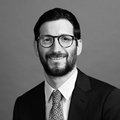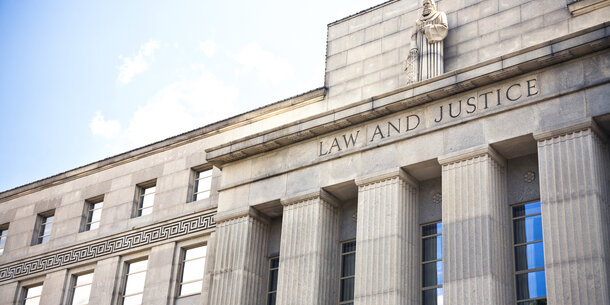Editor’s note: This resource was updated on July 18, 2022, to account for Judge Shirley Troutman’s appointment to the New York Court of Appeals in January 2022.
Earlier this year, the Brennan Center published an updated report on the diversity of judges who sit on states’ highest courts, including an analysis of high court judges’ professional backgrounds. Among high court judges in all 50 states, our analysis found that 81 percent had worked in private practice and 39 percent were former prosecutors, while only a small portion had substantial experience working on behalf of low-income residents — 7 percent of judges had served as public defenders and only 2 percent had worked as civil legal services attorneys.
Diverse professional backgrounds are essential to a fair and impartial judiciary. These experiences inform a judge’s perspective, ultimately influencing their decisions and shaping the law in the state where the judge sits. A 2021 analysis of federal court decisions in employment litigation, for example, found that judges with experience as prosecutors or corporate lawyers were less likely to rule in favor of workers than other judges.1
An upcoming vacancy on New York’s highest court, the Court of Appeals, has prompted renewed calls for more professional diversity on that court. The Legal Aid Society, for example, released a statement saying, “The absence of a public defender and civil legal services attorney on the Court creates a tremendous gap of knowledge and experience. . . . The public deserves a representative on the bench who is familiar with the struggles that our clients, Black and Latinx New Yorkers, are forced to endure every day.”
State leaders have also called attention to the importance of professional diversity on the Court of Appeals. Last year, in a September letter to the state’s Commission on Judicial Nomination regarding a previous vacancy on the court, State Senate Deputy Majority Leader Michael Gianaris wrote: “It is critical there are individuals considered who have worked in civil rights, indigent defense, housing, and immigration considering the impact those matters have before the people of New York.”
In light of these calls for increased diversity, the Brennan Center reviewed the professional backgrounds of the 36 judges who have sat on the New York Court of Appeals for the past 50 years.2Our review revealed a stark lack of professional diversity on New York’s highest court:3
- The most common professional experience for New York Court of Appeals judges in the past 50 years was having served as a judge on a lower court (81 percent), followed by private practice (69 percent) and serving as an attorney for state or local government (39 percent).
- In the past 50 years, only two judges (6 percent) had experience as public defenders, and there are currently no former public defenders serving on the court. (There have been more judges on the court with experience working for law firms on the Vault 100 list of the most prestigious private firms than there have been judges with experience as public defenders.)
- Of the six former prosecutors to sit on the Court of Appeals in the past 50 years (17 percent), four were appointed in the last 10 years, and all four remain on the bench.
- Four judges (11 percent) had experience working as civil legal services providers, who represent low-income individuals in matters such as eviction or consumer debt proceedings. Only one remains on the bench.
- Of the seven judges currently on the Court of Appeals,
- five worked as state or local government attorneys;
- four previously served as judges in lower courts;
- four worked as law clerks;
- four worked as prosecutors;
- three worked in private practice, including two at Vault 100 law firms;
- two worked as federal government attorneys;
- two have experience in academia; and
- one judge worked in civil legal services and at a separate legal nonprofit, and one worked in law enforcement (apart from having been a prosecutor).
Endnotes
-
1
Joanna Shepherd, The Relationship Between Professional Diversity and Judicial Decisions, Demand Justice, 2021, https://demandjustice.org/report/. -
2
Our methodology was as follows: We reviewed the official biographies of all state high court judges who sat on the New York Court of Appeals over the last 50 years and coded their professional affiliations in the following categories: former judge, attorney general, academia, private practice/law firm, in-house counsel, law clerk, court staff/attorney, lobbyist, civil legal services, law enforcement (besides prosecutor), federal government attorney, state/local government attorney, lawyer in governor’s office, lawyer for legislature, governor, state legislator, other elected official, nonprofit, public defender, prosecutor, Vault 100, and other. We coded judges as having belonged to any of these professions if they worked in that field after completing their legal education (legal internships were not included). We used the following tier ranking of sources: official biographies; court press releases; Ballotpedia and Wikipedia; and news reports. -
3
These figures include Chief Judge Janet DiFiore, who announced plans to retire at the end of August 2022. Before reaching the bench, DiFiore worked as a lower court judge, a local government attorney, a prosecutor, and in private practice.



